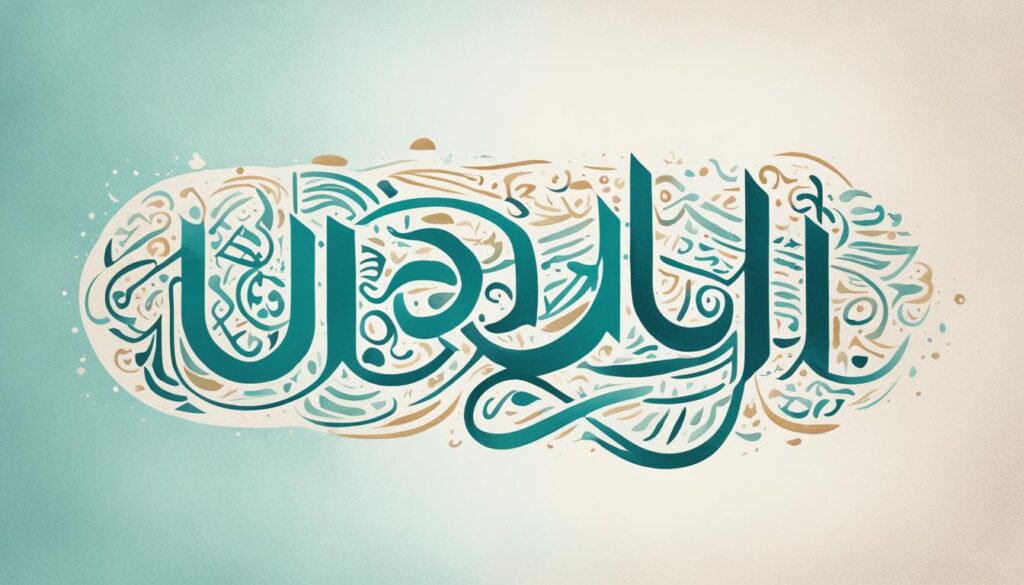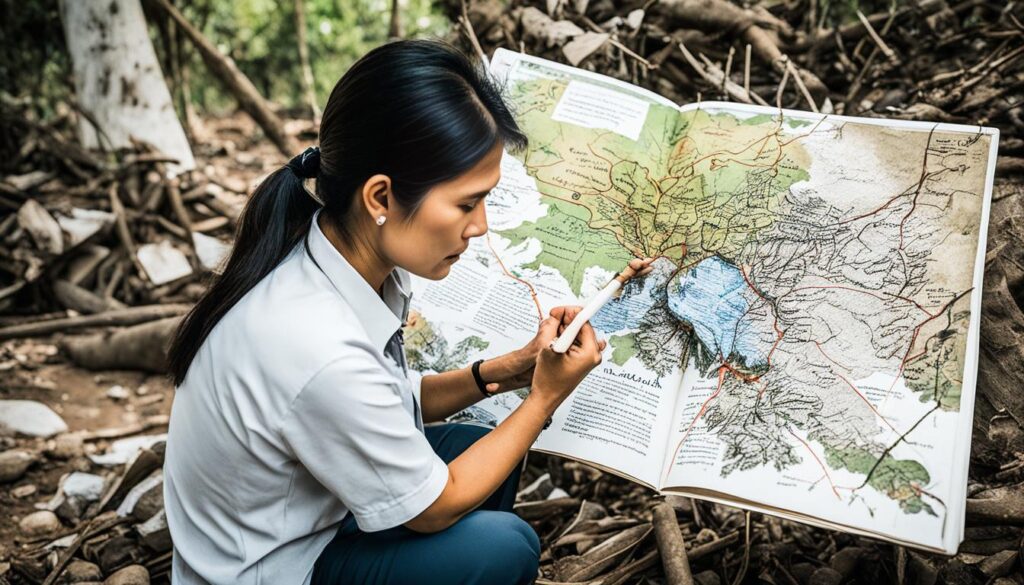When it comes to linguistic diversity, few regions can rival Southeast Asia. In this vibrant tapestry of languages, the Urak Lawoi Language stands out as a fascinating and endangered Malaysian indigenous language spoken in Southern Thailand. With its rich cultural heritage and unique linguistic characteristics, the Urak Lawoi Language is not only a fascinating subject of study but also a crucial aspect of the Urak Lawoi people’s identity and survival.
Recognized as a minority language in Thailand, the Urak Lawoi Language is spoken by the Urak Lawoi people, primarily in the provinces of Phuket, Krabi, and Satun. As part of the Austronesian language family, this language boasts approximately 5,000 native speakers as of 2012.
As we explore the Urak Lawoi Language, let’s delve into its unique characteristics, the challenges it faces, and the ongoing efforts to preserve and revitalize this endangered language. Join us on this linguistic journey and discover the richness of the Urak Lawoi culture and the significance of their native language.
Ethnicity and Population of the Urak Lawoi People
The Urak Lawoi people, also known as Sea Gypsies, are an ethnic group residing in Southern Thailand. They inhabit the islands of Phuket, Phi Phi, Jum, Lanta, Bulon, Lipe, and Adang in the Adang Archipelago. With a population of approximately 6,000 individuals, the Urak Lawoi people form a unique indigenous community in the region.
The Urak Lawoi people have their own distinct culture and way of life. They have traditionally relied on the sea for their sustenance, engaging in fishing, gathering marine resources, and practicing their ancestral rituals. However, their cultural heritage and traditional lifestyle have been undergoing significant changes.
“The encroachment of the market economy and the opening of Tarutao National Marine Park have had a profound impact on the Urak Lawoi people,” says Dr. Somsak Phanichcharoen, an expert in indigenous communities in Southern Thailand. “The development projects and increased tourism have brought both opportunities and challenges to their identity and way of life.”
The Urak Lawoi people, often referred to as Sea Gypsies due to their marine lifestyle, face the pressures of modernization, urbanization, and cultural assimilation. They are adapting to the changing dynamics of their surroundings while striving to preserve their cultural heritage and maintain their indigenous identity.
Language Characteristics and Phonology of Urak Lawoi
The Urak Lawoi language is closely related to Malay but has also been influenced by Thai. It possesses unique phonological and orthographic features that distinguish it from other languages.
The language utilizes a vowel system consisting of front, central, and back vowels. The pronunciation of these vowels can undergo changes depending on the syllable structure. This contributes to the distinct sounds and melodies that define the Urak Lawoi language.
The consonant system of Urak Lawoi includes a variety of stops, fricatives, nasals, and semivowels. These consonant sounds are crucial for conveying meaning and expressing different linguistic nuances. The combination of specific vowels and consonants creates the characteristic rhythm and melody of the Urak Lawoi language.
Although primarily an oral language, Urak Lawoi is also written using the Thai script. The writing system follows specific orthographic rules for representing different vowels and consonants accurately. This enables the preservation and dissemination of the language through written materials and documents.

“The unique phonology and orthography of the Urak Lawoi language contribute to its rich cultural heritage and distinct identity.”
Cultural Significance of the Urak Lawoi Language
The Urak Lawoi language holds immense cultural significance within the Urak Lawoi community. This language plays a vital role in preserving their rich cultural heritage, indigenous knowledge, and traditional practices that have been passed down through generations.
The Urak Lawoi language serves as a carrier of valuable indigenous knowledge encompassing a wide range of skills and practices. For instance, it holds intricate knowledge of traditional fishing techniques that have sustained the community for centuries. This encompasses various methods of fishing in the abundant coastal waters, ensuring the continuation of this cultural practice.
In addition to fishing techniques, the Urak Lawoi language also encompasses indigenous knowledge of medicinal plants. The community has developed comprehensive knowledge of local flora and their medicinal properties, which are shared and preserved through the language. This knowledge is invaluable and contributes to the health and well-being of the Urak Lawoi people.
“The Urak Lawoi language is the vessel that keeps our cultural heritage alive. It carries our stories, traditions, and the wisdom of our ancestors,” says Nok Saksin, a respected elder of the Urak Lawoi community.
Storytelling is another essential aspect of the Urak Lawoi culture, and the language serves as a means to pass down these stories from one generation to the next. Through the power of language, the community preserves its collective history, legends, and moral values, fostering a strong sense of identity and cultural cohesion.
Language preservation efforts are crucial in safeguarding the Urak Lawoi cultural heritage. By maintaining and revitalizing the Urak Lawoi language, the community ensures the transmission of their unique cultural practices, strengthening the sense of identity among future generations. Furthermore, the language acts as a unifying force, connecting individuals within the community and reinforcing a sense of belonging.
Preserving the Urak Lawoi language is not only an endeavor to protect a linguistic system but also a means to honor and celebrate the richness of the Urak Lawoi culture and their indigenous knowledge. It serves as a reminder of the community’s resilience, adaptability, and deep connection to their land and traditions.
Challenges Facing the Urak Lawoi Language
The Urak Lawoi language, like many indigenous languages, confronts numerous challenges that pose a significant threat to its survival and make it an endangered language. These challenges are primarily rooted in the rapid economic development and urbanization taking place in the region, which have resulted in cultural assimilation and a decline in the use of traditional languages.
As the younger generations of Urak Lawoi people are exposed to urban environments and influenced by mainstream society, there is a growing trend of speaking Thai and Malay rather than their native language. This shift towards dominant languages has caused a decrease in proficiency and usage of the Urak Lawoi language, thereby endangering its future.
“The cultural assimilation and economic development in the region have led to a decline in the use of traditional languages, including the Urak Lawoi language.” – Urak Lawoi community member
Efforts are being made to address the challenges facing the Urak Lawoi language. Researchers and community members are working together to document and preserve the language through language revitalization initiatives. However, more support and resources are needed to ensure the long-term preservation of the Urak Lawoi language.

“Preserving the Urak Lawoi language is not only about language itself. It is about preserving our cultural heritage, our identity, and our connection to our land and ancestors.” – Urak Lawoi language advocate
Efforts to Preserve and Revitalize the Urak Lawoi Language
The Urak Lawoi language is a vital component of the cultural heritage of the Urak Lawoi people. Recognizing the importance of language preservation, various initiatives have been undertaken to document and revitalize the Urak Lawoi language. These efforts are community-based and extend to educational and cultural programs.
Language documentation projects have been established to systematically record and document the grammar, vocabulary, and pronunciation of the Urak Lawoi language. These projects aim to create comprehensive language resources that can be used for future research, teaching, and language revitalization efforts.
Community-based initiatives are key to preserving and revitalizing the Urak Lawoi language. These initiatives involve collaboration between community members, linguists, educators, and other stakeholders. By engaging the Urak Lawoi community in language preservation activities, such as language classes, workshops, and cultural events, these initiatives create a sense of ownership and pride in the language.
The education sector also plays a crucial role in language revitalization. Efforts have been made to incorporate the Urak Lawoi language into the curriculum of local schools. Language classes are conducted to teach children and young people the Urak Lawoi language, ensuring its transmission to future generations.
Cultural programs and activities serve as platforms for promoting the value and importance of the Urak Lawoi language within the community and beyond. These programs celebrate the richness of the Urak Lawoi culture, emphasizing the language as a central aspect of cultural identity. Cultural festivals, storytelling sessions, and traditional music and dance performances provide opportunities for the Urak Lawoi community to showcase their language and foster intergenerational language use.
| Efforts to Preserve and Revitalize the Urak Lawoi Language |
|---|
| Language Documentation Projects |
| Community-based Initiatives |
| Education Programs |
| Cultural Programs |
These efforts have created a momentum for language revitalization and have garnered support from various stakeholders, including government agencies, non-profit organizations, and academic institutions. By working together, these initiatives aim to ensure the preservation and continued use of the Urak Lawoi language, safeguarding the rich cultural heritage of the Urak Lawoi people.
Conclusion
The Urak Lawoi Language, spoken by the Urak Lawoi people in Southern Thailand, is a remarkable Malaysian indigenous language that is deeply intertwined with their cultural heritage. It serves as a vital tool in preserving their unique identity and traditional practices, reflecting the rich cultural fabric of the indigenous community.
However, the Urak Lawoi Language faces significant challenges arising from cultural assimilation and rapid regional development. These factors threaten the continued existence of the language and the cultural richness it embodies. To combat this, various initiatives are underway, such as language documentation projects, community-based efforts, educational programs, and cultural activities.
These endeavors aim to raise awareness, foster community engagement, and ensure the preservation of the Urak Lawoi Language. By empowering the Urak Lawoi community and instilling pride in their language, these initiatives not only revitalize the endangered language but also safeguard the cultural heritage of the Urak Lawoi people for future generations to cherish.
